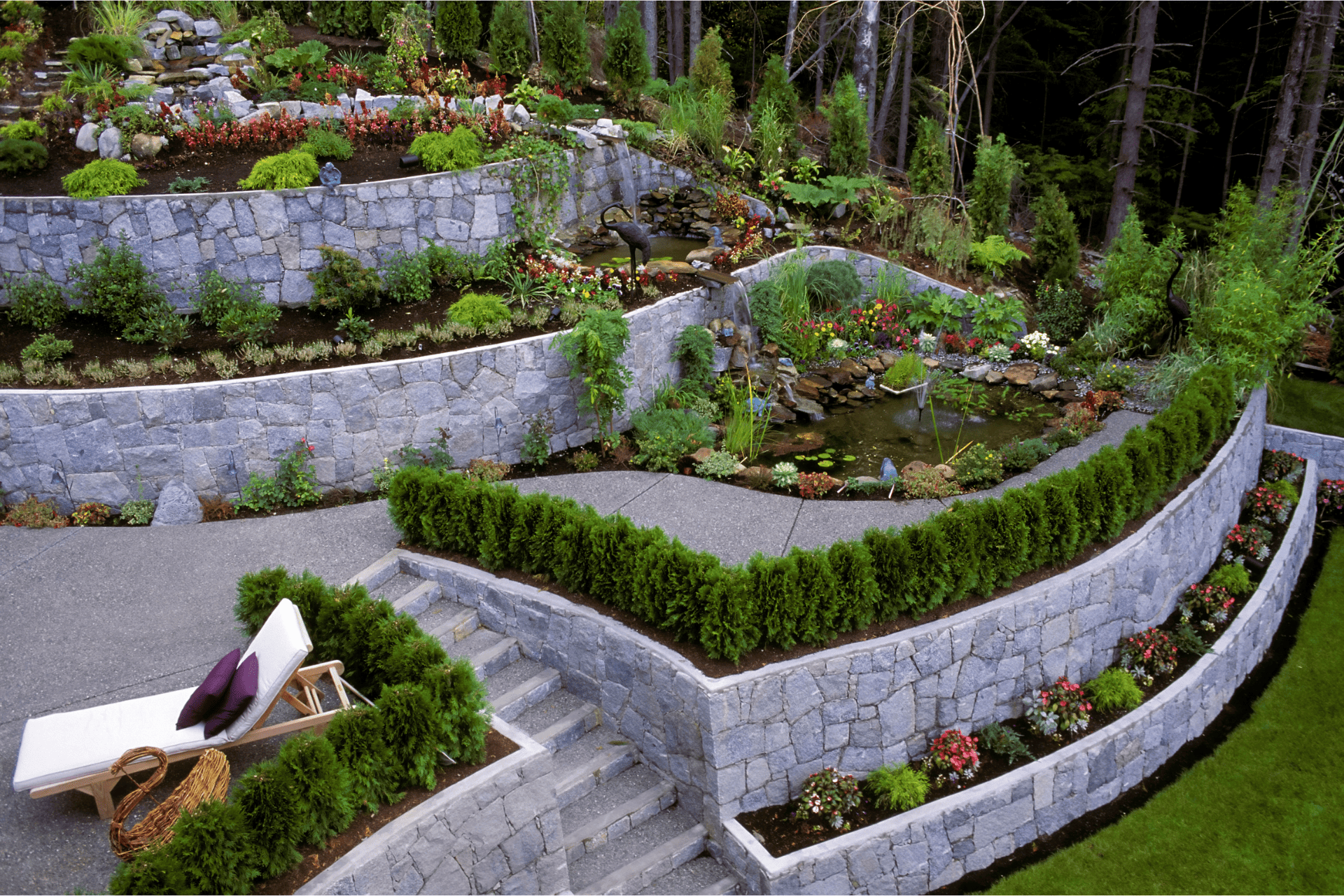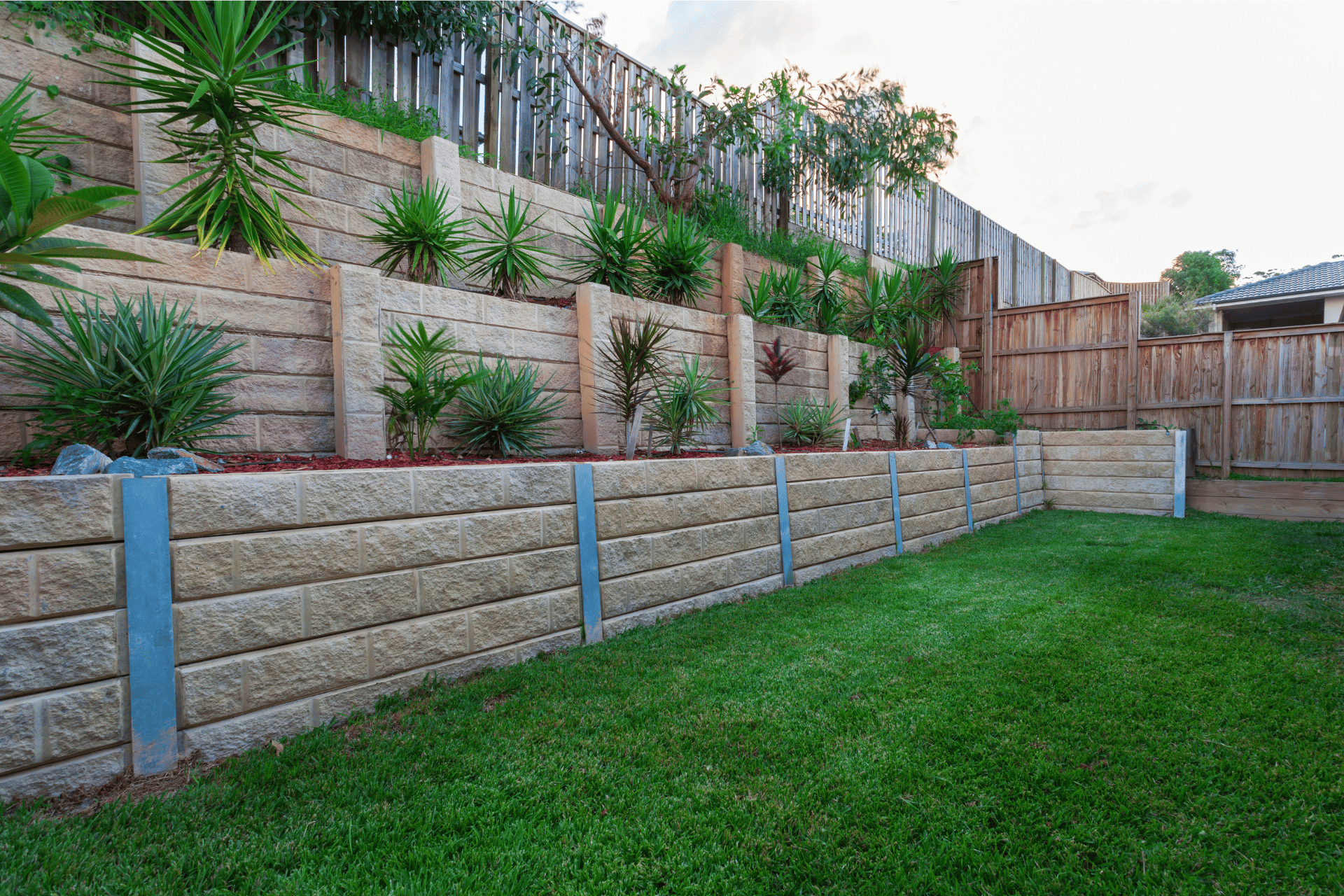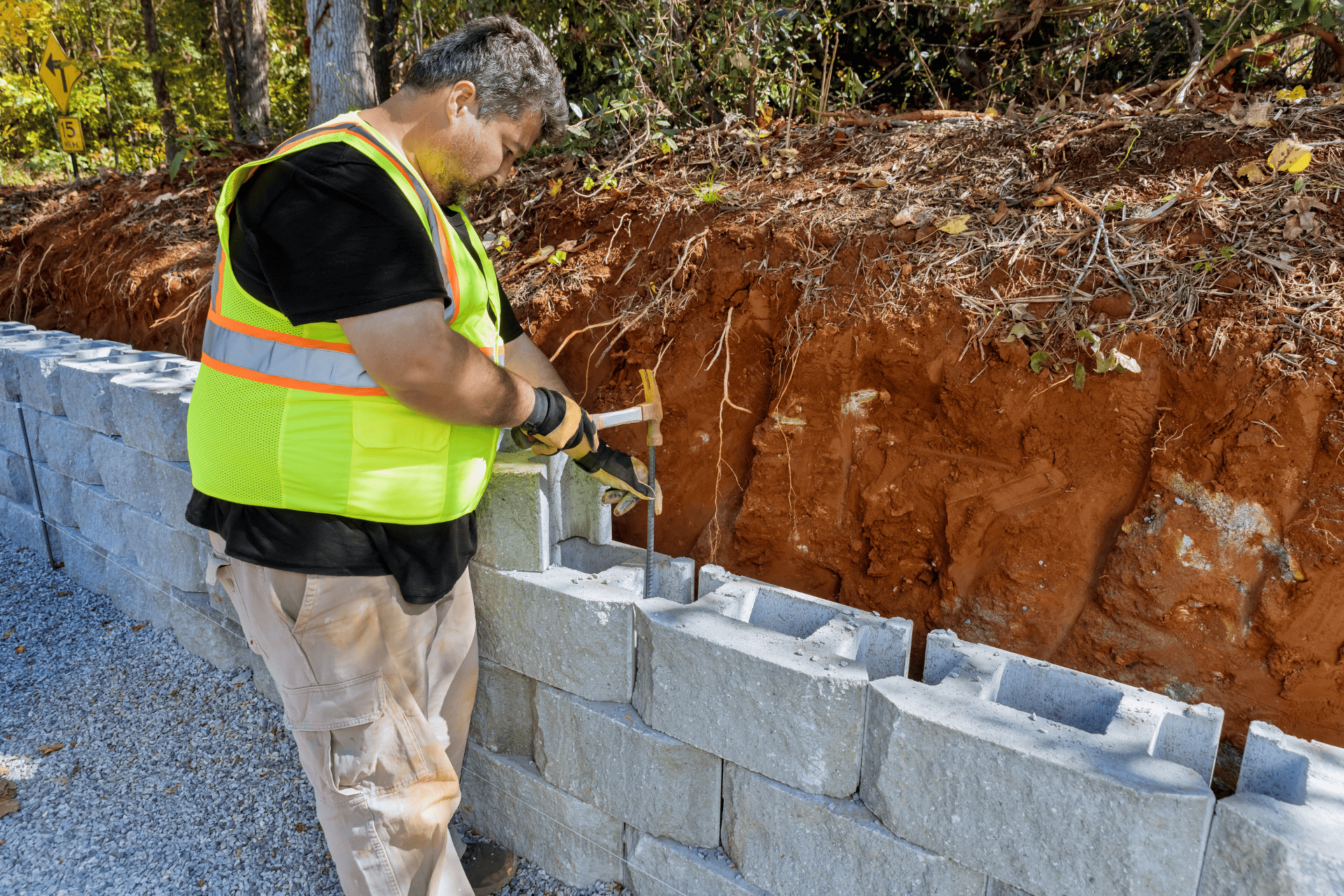Retaining Wall Construction
Retaining walls add beauty and function to any landscape. They prevent soil erosion, create level spaces, and boost property value. With our expert team at Richmond Landscapes, you get:
- Custom designs that fit your style
- Durable materials for long-lasting results
- Professional installation for a hassle-free experience
Choose us for your embankment construction project and see the difference quality makes. Let's create the perfect outdoor space together.
Types of Support Wall Materials
Choose a material that complements your home and retaining wall landscaping design.
Concrete Blocks
With flat sides and interlocking features, concrete blocks offer a good fit without needing mortar. You can buy them at home and garden centers or in stone yards.
Block wall construction is straightforward for smaller jobs like creating flower beds. However, mesh anchors are sometimes needed for longer runs and larger projects.
Concrete blocks have a rough finish across their faces for a natural look. They generally come in earth tones, like tan, rust, and gray hues.
Concrete blocks are ideal for creating curved features and are best for walls under 4 feet.
Pavers can also be incorporated into the design to create a seamless transition between the retaining wall and surrounding hardscape areas.
Natural Stone
Stone walls offer a natural look that’s long-lasting and sturdy. Natural stone and stone veneers offer many color and texture choices. So, there’s one to complement any outdoor design.
Place veneers over an existing wall for an instant update. Or create a stacked natural stone wall from the ground up. Experts design a solid core in just about any height or thickness, making stone a top preference for design choices.


Brick
You can’t beat a brick wall for a traditional and classic appearance. They are sturdy and suitable for various outdoor settings.
Laying brick walls is time-consuming, and drainage considerations make it difficult. Therefore, this isn’t a DIY support wall construction project for the average homeowner.
However, when properly constructed, brick walls are long-lasting and highly durable. Start with a concrete footing that’s rebar-reinforced. Ensure the footing lies below the frost line. Additionally, weep holes keep soil pressure from building.
These steps usually require installation by an experienced mason.
Timber
A cost-effective and easy-to-install retaining wall starts with timber. It’s a solid option for smaller DIY projects. Purchase wood from home centers and lumberyards for an affordable landscaping design that fits into any natural environment.
Screws and rebar hold these walls together, so you’ll only need a few tools. Another way timber walls are simple for homeowners is they only require a basic gravel footing. T-shaped anchors hold the wall in place, reinforcing the soil behind it.
You’ll find easy directions online using railroad ties, pressure-treated fir, redwood, or western red cedar. These options create a wall that lasts from 20 to 40 years.
Installation Process
Retaining walls are largely effective because of what you don’t see. Things like sound footing and adequate drainage determine the wall's lifespan. These items start with a site assessment. Evaluate the soil conditions, slopes, and hills to identify potential challenges and solutions.
Next, the design and planning stage helps customize the embankment to your aesthetic preferences. How do you want the wall to look? This stage also plans for proper drainage and structural integrity.
Excavating and foundation preparation are equally as important as the actual wall construction. Start with clearing the site, clearly marking the location, and then building a solid foundation.
Layering materials and ensuring proper alignment throughout the wall build helps to secure and reinforce it.
Design Considerations
When designing a support wall or embankment, consider matching the design with the existing landscape. Choose similar colors and textures so the wall complements your home. Incorporate plants in front of the wall to soften harsh corners and add bursts of color.
Address specific needs, such as erosion control or creating level areas. Walls hold back soil to create an outdoor dining area or garden beds. Consider incorporating a seating bench into a brick wall for added visual interest and functionality.
There’s really no limit to how beautiful and functional you can construct a block wall. For example, built-in planters add greenery to a long expanse of embankment walls.
Lawn care plays a crucial role in maintaining the overall appearance and health of your landscape, ensuring your retaining walls and surrounding areas remain vibrant and well-kept.
Why Choose Us for Retaining Wall Construction in Richmond
If constructing a brick or block wall seems like more than you want to do as a homeowner, give us a call today. 804-409-9763
Our local expertise in Richmond’s climate and soil conditions gives us a proven track record. We have skilled professionals dedicated to personalized service.
So email us at info@richmondlandscapes.com
to set an appointment. Or use our handy
Contact Form.

Contact
Richmond (City), Virginia, United States of America
